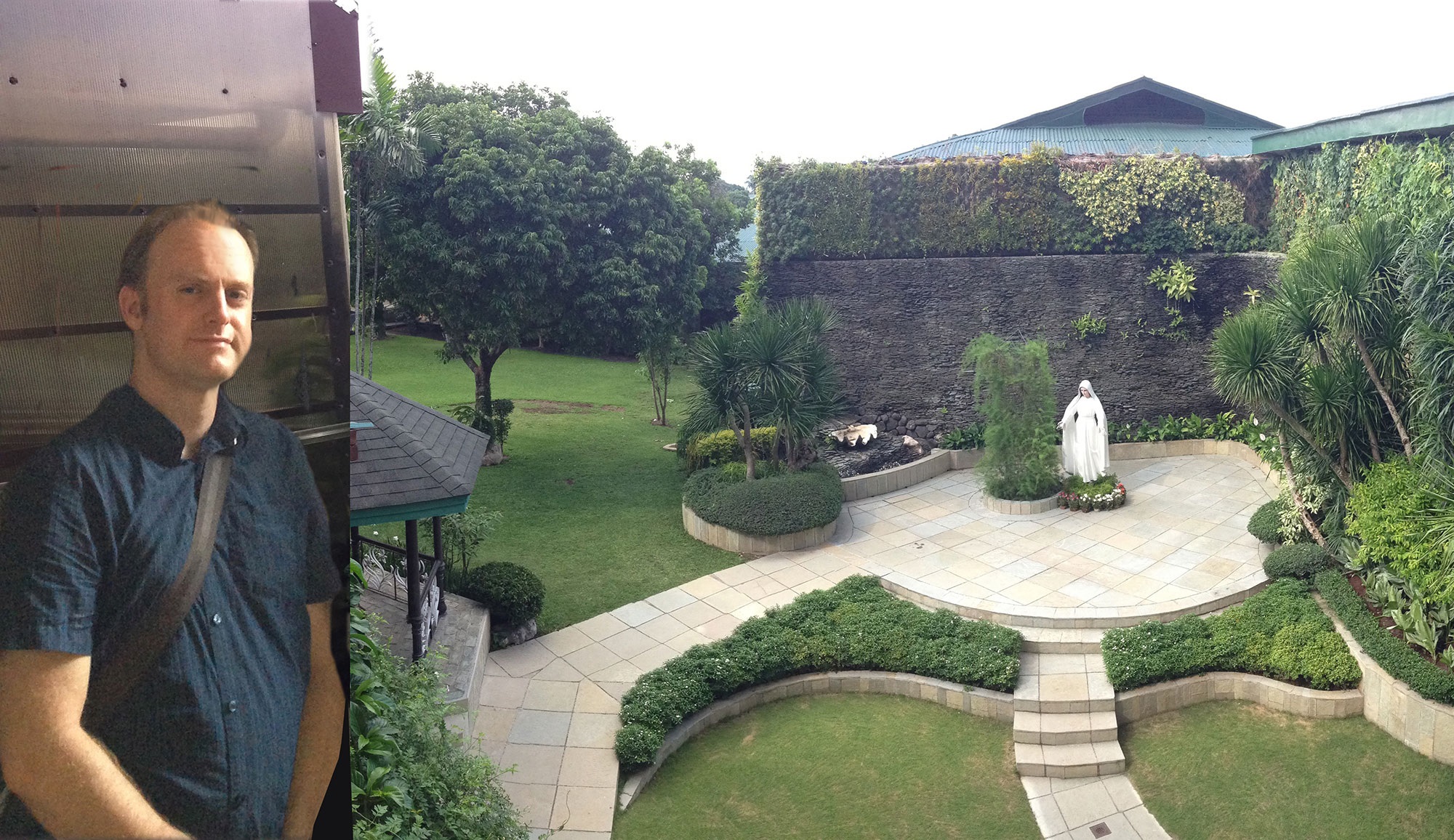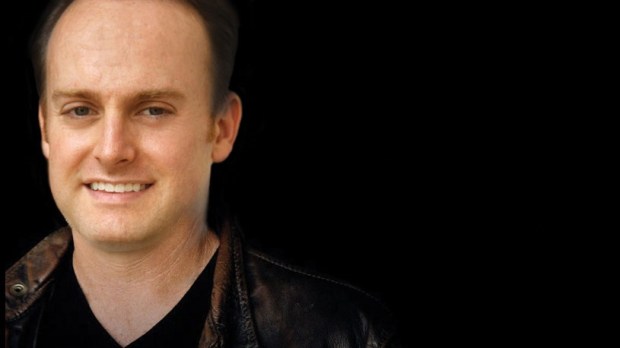As he was approaching his graduation from Stanford University, Michael O’Neill received some advice from the school’s then vice-provost, Condeleeza Rice. “She asked, ‘What are you going to do after graduation?’ and then she said, “Become an expert on something.’” It didn’t take O’Neill long to figure out what that would be: He would become an expert on miracles.
O’Neill, now 40, had long been fascinated with the miraculous. Growing up, his grandmother fell away from the Catholic faith and his mother — who had a strong Marian devotion — prayed for the intercession of Our Lady of Guadalupe to bring her back. “My mother made a deal with God and said, ‘If you bring my mother back, I’ll become a school teacher and teach every student I ever have the story of Our Lady of Guadalupe on December 12 and if you bless with me with any children, they’re going to hear that story, too, every single year,’”says O’Neill.
His grandmother did come back to the faith and his mom became a school teacher, teaching all of her students the story about the Virgin of Guadalupe, including her own children. “It was ultimately Our Lady of Guadalupe that turned me on to miracles,” says O’Neill.
Although he studied engineering at Stanford, he took an archeology class and ended up spending an incredible amount of time on a final paper about the tilma of Our Lady of Guadalupe. “I thought to myself, this is so fascinating, I can’t believe not only are these miracles being claimed throughout history, but that the Catholic Church actually approves some of them,” he recalls. “I thought it was mind-boggling that the Church would risk its credibility on some of these wild claims and stick its neck out and say some of them are worthy of belief.”
So in 1998, O’Neill launched his web site, Miracle Hunter. “I noticed there wasn’t too much out there on the web — at least nothing with a critical eye — everything was an overly-pious look at miracles so I thought I would look at it in a more academic way.”
In the years since, there have been books, a radio show, newspapers articles, and a sister site called 365 Days with Mary, where O’Neill has taken all the approved Marian devotions and lined them up according to feast days. O’Neill has published two books in the past two years and was featured in National Geographic’s cover story in December 2015, “How the Virgin Mary Became the World’s Most Powerful Woman.” There’s also a new television due to be launched on EWTN this fall/winter called “Miracles,” much of which will be filmed on location.
But O’Neill wasn’t always keen to share his love of miracles with others. “I kept it quiet for a long time because being interested in miracles is often looked at like chasing UFOs or Bigfoot,” he says. Ultimately, though, this is about evangelization for him.
“Miracles can really help to bolster somebody’s faith,” he says. “They shouldn’t be the center of our faith. There are people — we all know them — who get hung up on these things. I’m the ‘miracle hunter’ so it sounds funny for me to say this, but if that’s the entirety of your faith, you’re in trouble. But it’s a great entry point and it’s a point of excitement for people to engage with their faith and turn towards Christ, when they see these great occasions when God has blessed the world. For people who have lost their faith, miracles are a great way to re-engage, and for young people who have supernatural characters and storylines in their movies and video games — well, we have all that in Catholic faith so it’s a great way for them to get interested in the faith.”
O’Neill says the greatest misunderstanding people have about apparitions, and miracles more generally, is the assumption that the Catholic Church is approving and promoting these things to “lure people back into churches or sell rosary beads at a local shrine.” But in reality, the Church isn’t interested in that at all.
“I mean, of course, she wants to evangelize and have as many faithful members as possible, but when the Church is investigating an apparition or miracle, she wants to shut it down, for people to return to a more ‘normal’ practice of faith centered on Christ and his words and works in the Gospel, given through the Church,” explains O’Neill. “So when people are wildly chasing these claims, lining up to see bleeding statues, of course those can be wonderful reminders of God’s love for us, but they can also be distractions. When the Church investigates something it’s actually trying to prove there is nothing supernatural there. So when something is declared worthy of belief, established as supernatural, that’s a cause for celebration because the Church was trying to disprove it all along.”
O’Neill says the way the Church approaches miracles is “absolutely perfect and you can’t argue with it.” He points out that when the Church finds a miraculous claim worthy of belief, the faithful still don’t have to believe it. “If it helps our faith and the Church has approved it, we can incorporate it into our life of faith. If it’s something we find strange or unnecessary or distracting, we don’t have to pay any attention to it at all.”
O’Neill has explored and researched many kinds of miracles and discusses them in his book, Exploring the Miraculous, but personally he finds Eucharistic miracles the most fascinating because of how science can validate them.
“In some rare instances it’s been shown that a consecrated host contains true flesh and true blood — there was a recent case in Poland where a striated heart tissue was found in a host, for example. Oftentimes, the Church has atheist scientists look at these and they’ve said, ‘Yes, we’ve got bread, but we’ve also got true flesh and true blood here.’ So those are my favorite kind — where science can actually step in and show a miracle is in fact happening.”
He receives emails from around the world and sometimes his Christocentric view of miracles is challenged. “I do have to acknowledge that there are claims happening in other cultures and other religions, but my primary focus is to show how miracles can help Christians strengthen their faith,” he says.

Though he resides in the Chicago area and works mostly in the U.S., O’Neill travels around the world to investigate claims when he can. (He was recently in the Philippines examining the details of a controversial Marian apparition.) “We now have stories of weeping statues in greater numbers that I can ever remember, and I’m happy to check them out when they come out, but it is almost always a hoax or there’s a natural explanation. It’s very rare when any of these are truly miraculous. And oftentimes, if I wait a bit before running off to investigate, the Church will get to the bottom of it.”
Marian apparitions are a specialty of O’Neill’s and when asked about why he thinks it’s usually the Virgin Mary who comes, rather than other saints or Jesus himself, O’Neill says he believes it’s because Mary has a special role in salvation history as a mother. “She is there to help us in our time of need. When we fall, she’s there to pick us up. In times of war, famine, plague, Mary comes to us as a mother.”
O’Neill also speculates that if Jesus were appearing — and there are approved apparitions of Christ (by St. Faustina and St. Mary Mary Alacoque, for example) — “having God Himself appear to us might be overwhelming, whereas having His mother and our mother coming to us is comforting and easier for us to accept.”
Plans are underway for O’Neill to write a new book on modern miracles and he hopes to soon launch “Miracle Hunter Tours,” leading groups to the great sites of miracles approved by Church— the first will be a pilgrimage to Fatima for its upcoming 100th year anniversary.

